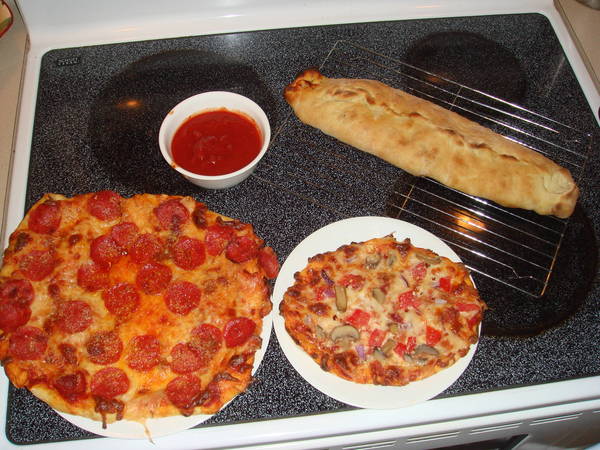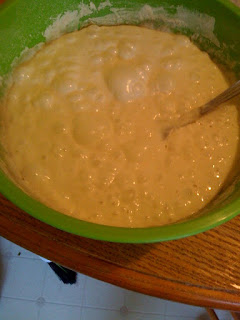I have a few things to add to all of what has been said.
1. Rice flour instead of cornmeal, semolina, flour and any of the other stuff is my savior for creating a slippery surface from the peel to the stone. Put it into a shaker and just dust the surface of the peel before placing the rolled out dough onto it. It is so fine grained that it coats very well and then doesn't stick to the bottom of the pizza in the same way that cornmeal is gritty, and flour is so dry.
2. I make a sauce that is foolproof and simple.
1 can of Italian styled stewed tomatoes (I use S&W)
1 clove garlic
1 tblsp Italian Seasoning
Salt and pepper
1/4 tsp red pepper flake
1/2 tsp granulated garlic
3. Proofing is the key. During the summer I will take my dough to work and place it in the sun till it doubles and then knock it down, then again. Then I place it into a cold place (fridge or whatnot) till mid afternoon and then out to do a final rise about two hours prior to cooking it. This makes it very chewy and also have great air pockets that turn crispy on the outside.
4. I use all purpose flour always. High gluten I find can turn out very stiff if you don't kneed it enough or proof it long enough.
5. Always salt your dough and I always like to add in the granulated garlic, some italian seasoning, some red pepper flakes or something else to make it POP!
6. Don't over fill with toppings. Just a simple amount of cheese and like two toppings (or three sparsely spaced). My friend makes pizza and puts everything under the sun on it, there is no distinct flavor and it just becomes too rich.
7. During the summer time, use fresh tomatoes for that awesome flavor that you can't get from canned. When I say fresh, I mean from the farmers market or someone that is selling them on the side of the road. That crap at the grocery store should be avoided if at all possible.
Last but not least is that everyone that is making their own dough should definately make a sourdough starter at least once. It is easy and fun and really adds that extra something. For the beginner make it with a little bit of yeast. For the more advanced you can capture the local yeast and make some. I am working up a new starter at my new house and it is bubbling away after three days. I should have some delicious flavors coming out in another three days or so. Then you have to feed the beast!
^^My sourdough starter that I just began three days ago.
Cheers and hopefully this isn't too long of a post to follow.








![Craft A Brew - Safale S-04 Dry Yeast - Fermentis - English Ale Dry Yeast - For English and American Ales and Hard Apple Ciders - Ingredients for Home Brewing - Beer Making Supplies - [1 Pack]](https://m.media-amazon.com/images/I/41fVGNh6JfL._SL500_.jpg)





















































